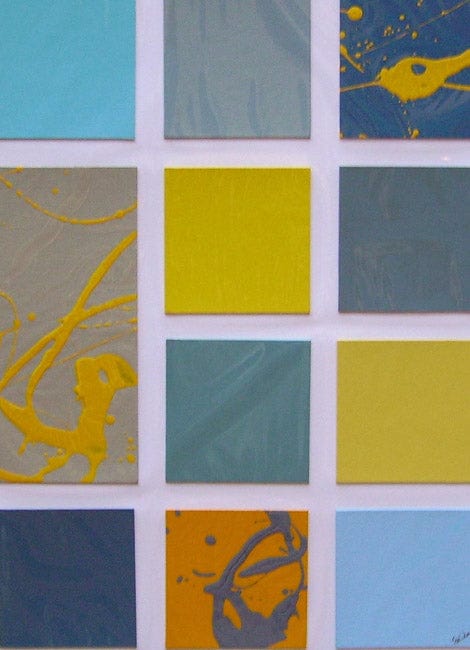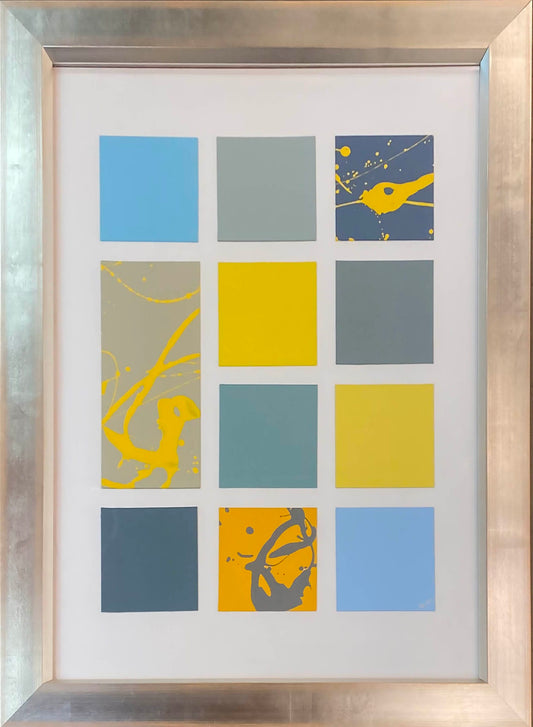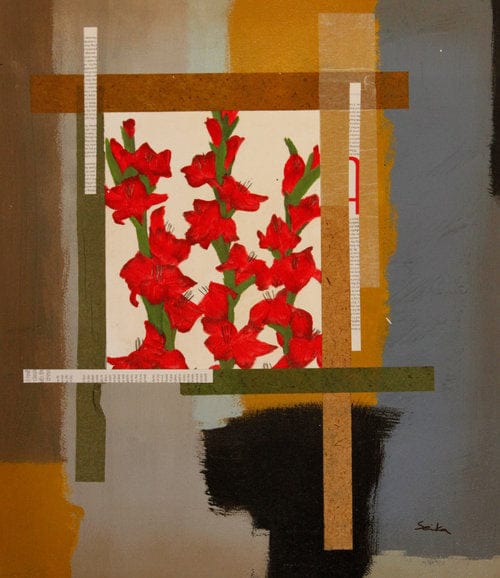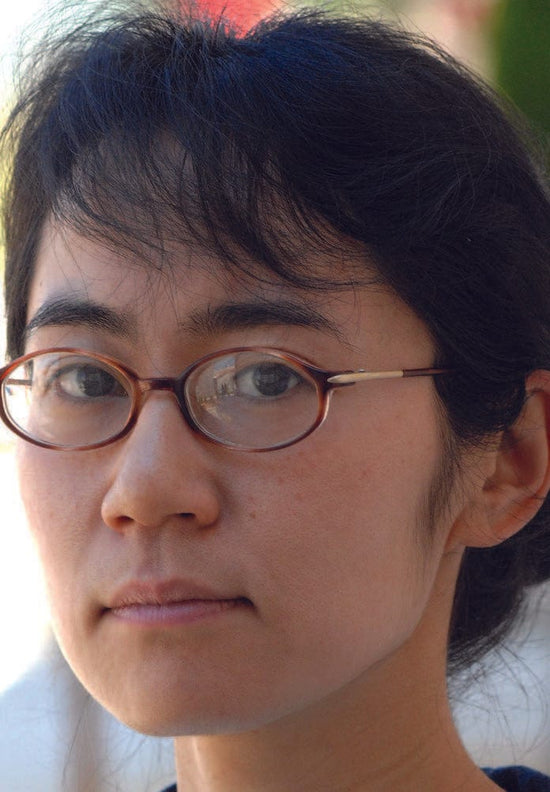Nakisa Seika
-
Arpeggio, framed
Vendor:Nakisa SeikaRegular price $1,243.50 CADRegular priceUnit price / per -
Arpeggio, framed
Vendor:Nakisa SeikaRegular price $1,360.00 CADRegular priceUnit price / per -
Oriental Garden
Vendor:Nakisa SeikaRegular price $875.00 CADRegular priceUnit price / per$0.00 CADSale price $875.00 CAD
-
Nakisa Seika
-
Nakisa Seika was born in Tokyo, Japan, in 1974. Emerging from this bustling metropolis, where fantasy form meets commercial function, Nakisa was instantly thrust into a collective climate motivated by internal passion and intellectual duty. As instinctively as one would take her first steps or utter words, Nakisa delved deeply into the creative soul that lay just beneath the surface of her ink-stained skin, eager to express her stunning, inimitable visions with the world. Armed with a degree in painting from Atlanta College of Art and a deft hand, Nakisa has crafted a career steeped in both artistic knowledge and cultural deference.
Nakisa’s Japanese heritage is infused into every stroke of her work. Her delicate lines and gauzy gestures echo the serenity of her tranquil yet chaotic homeland, a place routinely celebrated for harmoniously merging such conflicting ideals. The rough hewn, organic textures of Nakisa’s pieces, juxtaposed to the graphic images of nature -- all represented in soft hues -- are a direct reflection of Nakisa’s birthplace, where striking, otherworldly beauty and technological progress collide. It is in Tokyo that the magical rituals of the ancient temples – situated high upon hills, encased within forests –melt seamlessly into the stark, urban landscape of this Eastern hotbed of financial prosperity. Much like Nakisa’s work, the city of Tokyo is an exercise in the balance of extremes. Whereas the Japanese capital melds commerce and culture, Nakisa unites whimsy and technical skill, giving each room to breathe while simultaneously persuading them to delicately intertwine.
Her organic, transitional pieces -- which feature elegant imagery in the form of floral motifs, trees, and piecemeal painting -- mirror her status as a rising star in the art world. The abundance of nature in Nakisa’s work, including the vibrant flowers showcased in her Oriental Gardens collection, is a beautiful metaphor for Nakisa’s youthful effervescence, as both artist and being. Just as these flowers, bursting and blooming forth with sparkling energy, Nakisa continues to blossom into an increasingly remarkable figure in the art world.
It’s no wonder Nakisa has accomplished so much in her short but prolific career: Practically from birth, Nakisa’s mother fostered within her daughter an intense appreciation for the arts. For as long as she can remember, Nakisa was carted around from one museum to the next, gaining access to thousands of works of art before she could even talk. Nakisa’s earliest memories are populated by all the artistic “greats” – Picasso, Michelangelo, Diego Velazquez – each of whom she credits with sparking her imagination as a child. “Mom took us to the Picasso museum a lot,” Nakisa says. “He had a variety of different styles, and knew everything [about art] by the age of 15. I followed his career. He makes an amazing impression on a kid.”
These primary encounters with Europe’s finest, brightest talents surely played into Nakisa’s own future as an artistic wunderkind. However, Nakisa’s numerous permutations were perhaps more significantly shaped by Japanese animation, one of few economically viable avenues for visual artists seeking to solidify their skill in Japan. Nakisa was spellbound by Anime and its detailed, live action drawings; transfixed by the confluence of ancient shamanistic principles with the quick, edgy lines of modern cartooning. Absorbed by this method, Nakisa channeled it into her artistic pursuits.
Nakisa is connected to her work in both a visual and intellectual way – it would be impossible, after all, for her to deny the rich roots that gave life to her singular ideas – but she is also tied to her artistic spirit. With the devotion of a religious zealot, Nakisa is irrevocably bound to the unnamed, ethereal quality that drives all truly inspired works of art. Using Japan’s native religion, Shintoism, as a guide, Nakisa conjures intricate arrangements and unrefined textures. Ceremonial and spiritual in its leanings, Shintoism is evident in the fluid motions of Nakisa’s brushstrokes as well as the emotional tone of her chiefly nature-centric subject matter.
“We believe eight million spirits live within us,” Nakisa says, “Nature is hiding a lot of them. In Japan, we feel closer to nature. It is a part of us.”
Despite harboring such strong associations between her native land and the Great Outdoors, Nakisa’s environmental scenes are heavily influenced by American mastermind Andrew Wyeth - of “Christina’s World” fame - a realist painter renowned for his sweeping, lush landscapes and jarringly lifelike human figures. In his epic images, Wyeth, who overlaps serene subject matter and arresting color and technique, begs a response similar to the corporeal arousal one experiences in the presence of a Seika piece.
Etched into every fiber of Nakisa’s being -- and cascading down every inch of her work -- are the marks of a self-possessed, profoundly capable woman molded by a supportive family and astonishingly complex culture, one that is still a beautiful mystery to those living outside of it. Well-versed in the ways of her Japanese heritage, Nakisa is equipped with more than the physical tools to create her spectacular works of art. She is guided by an intrinsic inner dialogue with humanity and nature, perfectly balanced between reality and a world existing beyond the realm of the five senses; expertly toeing the line between reason and flights of fancy. Though she is dedicated to the creation of realistic representations, Nakisa uses a variety of mediums and colors for her pieces, which reverberate off of one another, sensually drifting in and out like oceanic tides. Nakisa’s mastery of Japanese calligraphy and the Sumi-E method, a process that directly translates as “Black Ink Painting” in English, lends an unmistakably authentic, Eastern aura to her creations that is unmatched.
And yet as all gifted artists, Nakisa does not believe her work will ever be complete. She refuses to suppress ingenuity for any reason whatsoever. “I’m sure I will not be satisfied with my work until the day I die,” Nakisa says. “I am always refining my style, always improving.”






